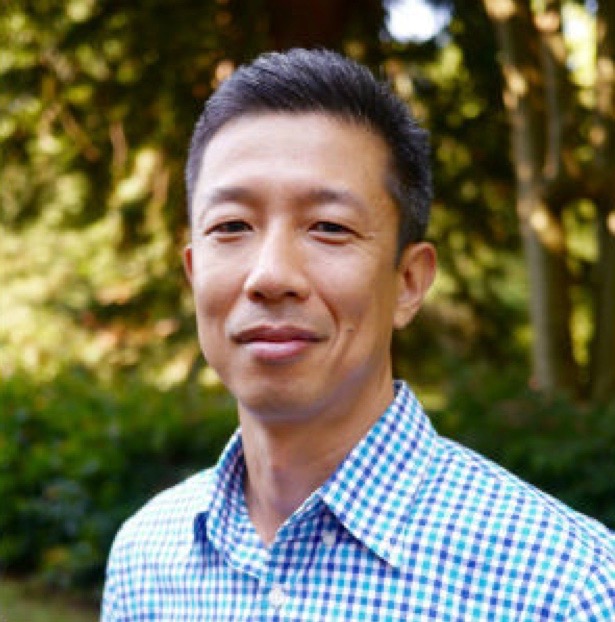 This past fall, Dr. Tomoyuki Sasaki joined the Japanese program as an Associate Professor. We spoke to him recently about his research and teaching.
This past fall, Dr. Tomoyuki Sasaki joined the Japanese program as an Associate Professor. We spoke to him recently about his research and teaching.
Q: Professor Sasaki, Welcome to William & Mary. I hope you are enjoying the campus and getting to know the town of Williamsburg. You started at W&M this August. Do you mind starting by telling us a little about your career before coming to W&M?
A: Sure. I earned my PhD in history at the University of California, San Diego, with focus on modern Japanese history. After that, I taught at Kalamazoo College in Michigan for one year as a visiting assistant professor. Then, I moved to Eastern Michigan University, where I spent six years, teaching courses on Japanese, East Asian, and world history.
Q: So you are trained as a historian. Can you talk a bit about your research?
A: Yes. Since I started my career as a scholar, I’ve been interested in relations between the military and civil society in the modern state—how the military, as an organization with the right to exercise physical violence, normalizes its presence in a democratic state. I used post-WWII Japan as a case study. Postwar Japan established a so-called Peace Constitution, renouncing war and banning the nation from possessing any type of war potential. But it also developed large-scale armed forces, called the Self-Defense Forces. Because of the gap between the constitutional ideal and the actual presence of a military organization, postwar Japan has actively contested the meanings of the military, so it presents a very interesting case. I deal with this topic at length in my book, Japan’s Postwar Military and Civil Society: Contesting a Better Life, which came out last year.
Q: What is the main argument of your book?
 A: In the book, I focus on the Cold War period between the 1950s and 1980s. For Japan, as for many other industrialized countries, this was the time of high-speed economic growth. Japan’s high-speed economic growth is well-known worldwide, but it didn’t resolve many of the problems immanent to capitalism, such as unemployment, underemployment, and the economic gap between social classes as well as the gap between the city and the countryside. The SDF played an important role in alleviating these problems by offering employment for working-class men and using the labor of these men for the development of communities in the countryside, that were experiencing financial hardship. By looking at this role, I wanted to demonstrate how the SDF established itself structurally within Japan’s capitalist economic system and how this led to the consolidation of an intertwined socio-economic relation between the military and civil society.
A: In the book, I focus on the Cold War period between the 1950s and 1980s. For Japan, as for many other industrialized countries, this was the time of high-speed economic growth. Japan’s high-speed economic growth is well-known worldwide, but it didn’t resolve many of the problems immanent to capitalism, such as unemployment, underemployment, and the economic gap between social classes as well as the gap between the city and the countryside. The SDF played an important role in alleviating these problems by offering employment for working-class men and using the labor of these men for the development of communities in the countryside, that were experiencing financial hardship. By looking at this role, I wanted to demonstrate how the SDF established itself structurally within Japan’s capitalist economic system and how this led to the consolidation of an intertwined socio-economic relation between the military and civil society.
Q: Any advice for students studying about Japan in particular and East Asia more broadly?
So much information on Japan and East Asia is available in America. Many people have fixed ideas about Japan and East Asia even before coming to college. In college-level education, I think, it’s essential to question what you know, to consider self-reflectively and self-critically how those ideas and understandings were shaped, and to become aware that there are many ways to conceptualize the object of your study.
Q: What courses will you be teaching at William & Mary?
A: In Spring 2016, I’ll be teaching two courses. First, Introduction to Japanese Studies. This course will introduce students to various methodologies, concepts, and theories crucial to the study of Japan. It’s a perfect course if you’re thinking of minoring in Japanese Studies. The other course is Japanese Cinema. We will deal with twelve films produced in the post-WWII period and examine the significance of these films within the historical contexts of US occupation, high-speed economic growth, social movements, and so on. During this period, especially in the 1950s and 1960s, there were so many great directors, actors and actresses, and screenwriters—it was a difficult task for me to select just twelve films; fun, but difficult. Anyone interested in Japan, Japanese films, and films in general is welcome.
Q: How do you spend your free time? Have you explored Williamsburg?
Watching old Japanese films always relaxes me. I also enjoy walking through colonial Williamsburg and petting the horses there. I’ve also been exploring some of the great restaurants in Richmond, too.
Thank you, Professor Sasaki. It was a pleasure talking with you.
